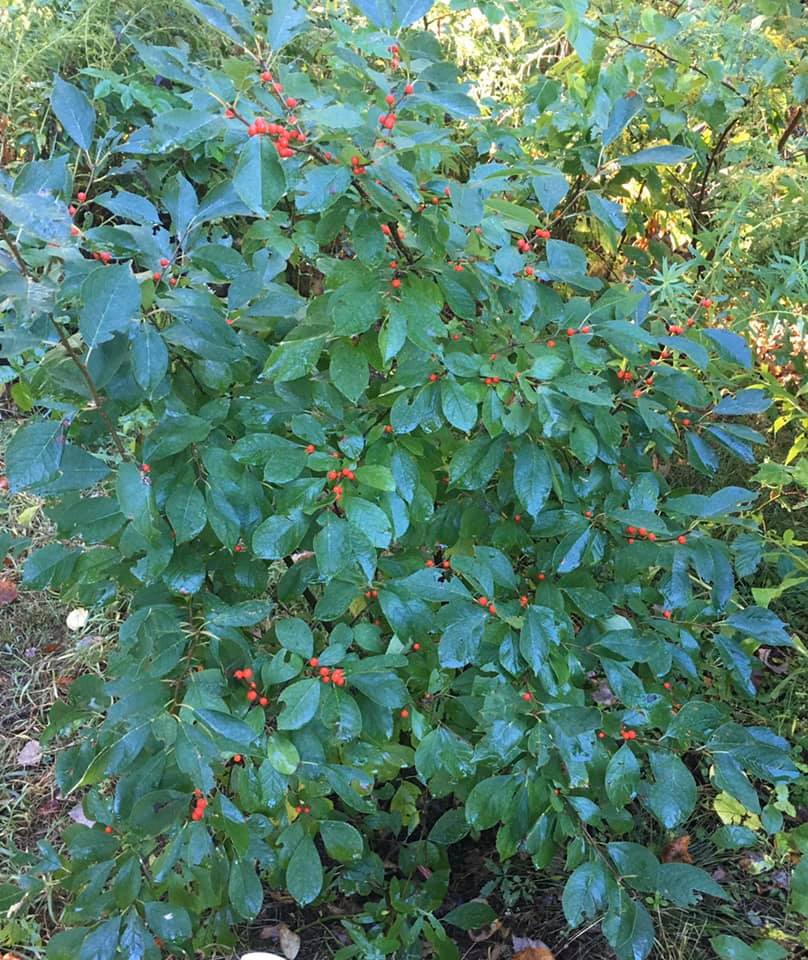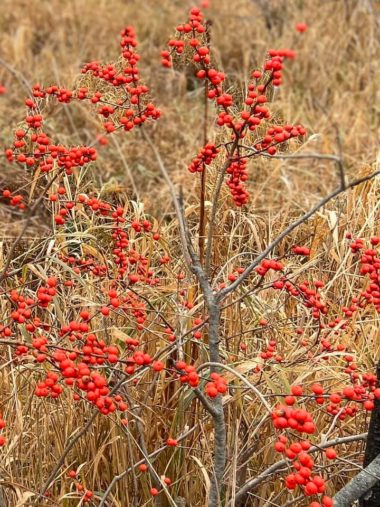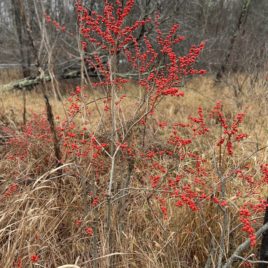Winterberry Holly
Winterberry holly
There’s nothing like the bright red berries of holly in the winter! They stand out in a landscape that has faded to brown and grey and can add a pop of color to our wreaths and arrangements.
Pictured here is common winterberry, Ilex verticillata. It is a deciduous holly that’s native to Eastern North America, and doesn’t have the sharp toothed leaves like the evergreen hollies.
The foliage turns from green to purplish-green to almost black after the first frost, then the leaves drop. The dense clusters of showy red berries remain on the branches throughout the winter and early spring.

This picture shows the vibrant green foliage of the Winterberry Holly. This shrub is fairly small compared to the potential of growing up to 10 ft tall!
Form: Winterberry is an upright, medium-sized shrub, typically 6-10 ft. tall and suckers to form colonies.
Habitat: It’s typically found in swamps, damp thickets, low woods, and along ponds and streams, such as Clay Pit Brook at Hawk Valley Farm. It also can be found on our Nicole Drive property! It can tolerate dry sites and is a great addition to home landscapes.
Wildlife/pollinators: Birds are attracted to winterberries as a late season food source, and the inconspicuous pale yellow flowers are of special value to honey bees. Ilex verticillata is also a larval host plant for the “Elf” butterfly (Microtia elva) — how appropriate for this holiday favorite!
Have you seen any hollies local to Lowell? Let us know – share your experience!
(originally featured as December 2019 Flora & Fauna Friday)



